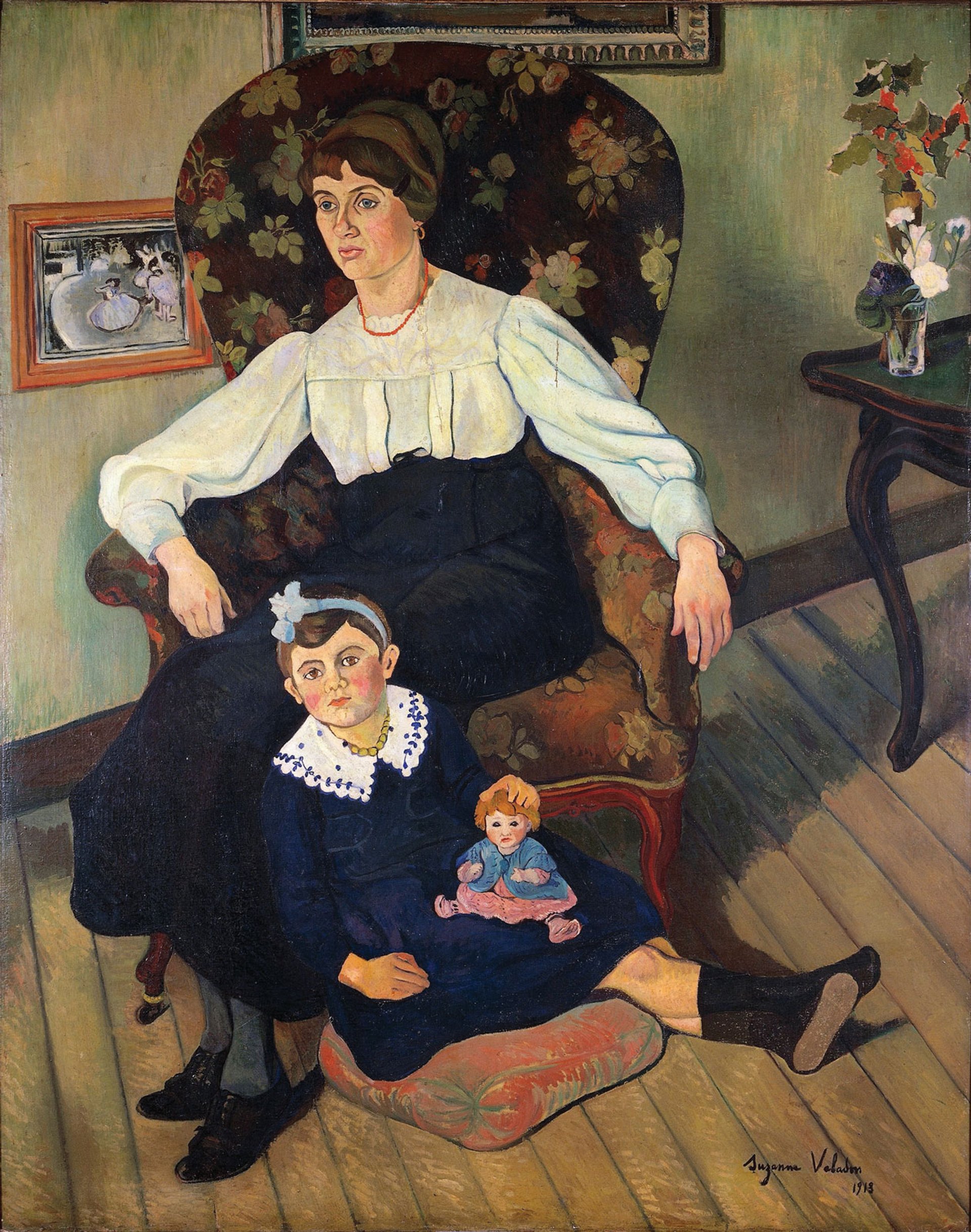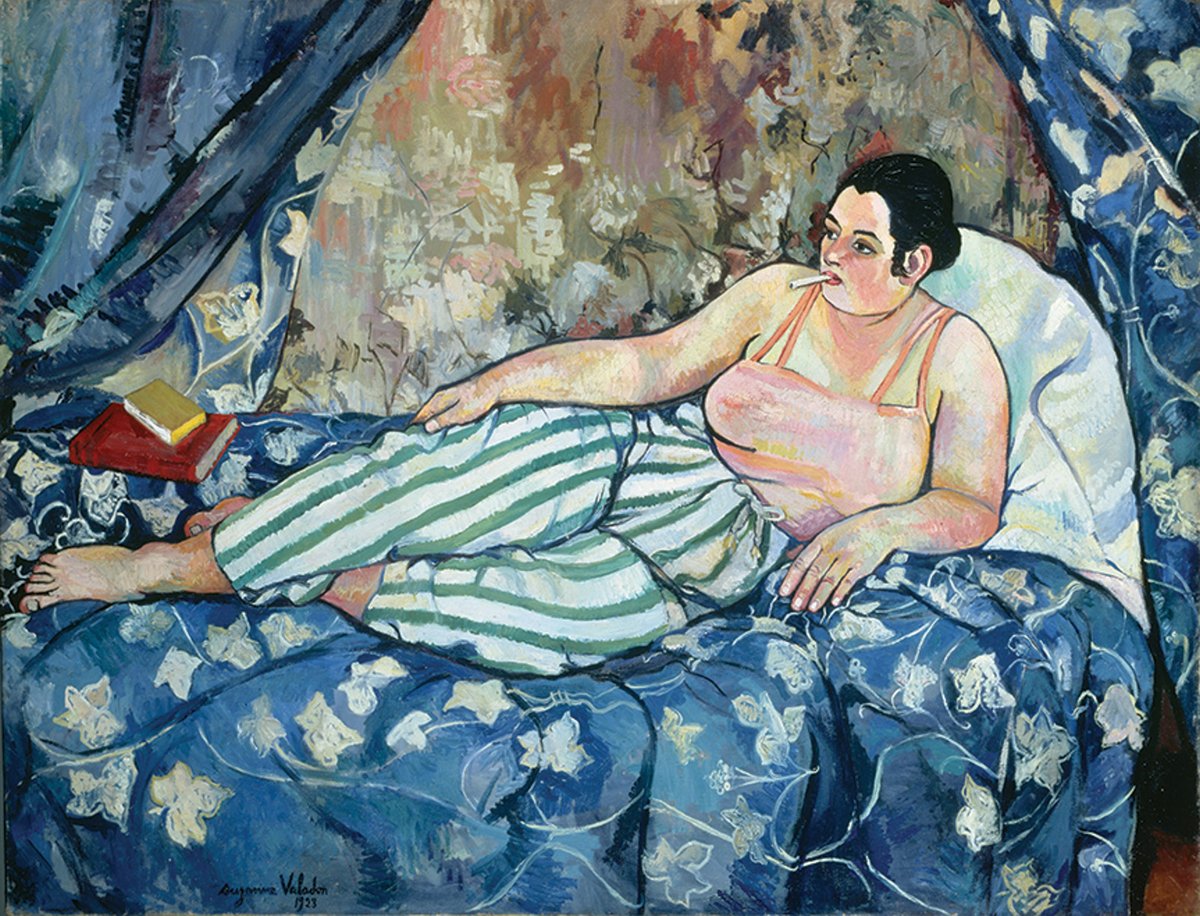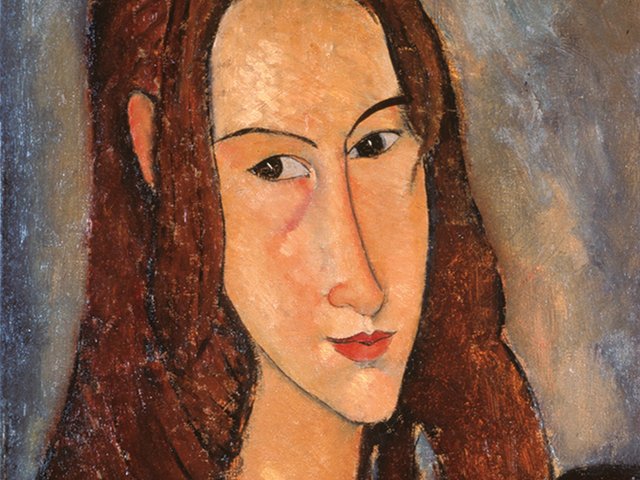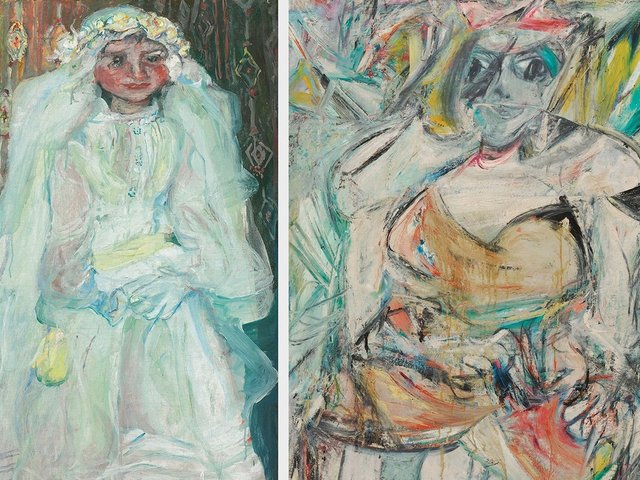Marie-Clémentine Valadon went by the name Maria when she modelled for Parisian artists such as Pierre-Auguste Renoir and Henri de Toulouse-Lautrec, but by the time she painted one of her finest works, The Blue Room in 1923, she went by Suzanne. The idea came from Toulouse-Lautrec, who gave her the nickname after the biblical story of Susanna and the Elders—another woman ogled in the nude by older men. Valadon only formally adopted the name after her modelling days were over, subverting its meaning as she now stood firmly behind the easel.
The Blue Room is a highlight of an exhibition on Valadon at the Barnes Foundation, Philadelphia, and “shows her at the height of her powers as a painter”, says the curator Nancy Ireson. Like Valadon’s alias, it quashes expectations of a model we might expect to be nude but is not. In it, a woman stretches out on a blue bed in the style of an odalisque—an Ottoman chambermaid—but instead of being classically unclothed she wears arrestingly modern striped trousers and a camisole as an unlit cigarette hangs from her mouth.

Suzanne Valadon's Marie Coca and Her Daughter Gilberte (1913). Musée des Beaux-Arts de Lyon © 2021 ARS, DeA Picture Library, Art Resource
“Valadon evokes Matisse and then pulls out the rug, conjuring a traditional theme only to disrupt it with jarring modern intrusions … they remind us that the depicted odalisque is a real person performing a role,” writes the museum’s research director Martha Lucy in the catalogue. The work will be installed in a gallery exploring how Valadon reimagined painting the female figure and what set her apart from her male contemporaries displayed elsewhere in the museum. In her catalogue essay, the South African artist Lisa Brice notes that simply portraying a woman relaxing could “be construed as a radical act … to be at ease on one’s own terms is a protest of sorts.” Relaxing as a form of protest is something many of us could sure get behind.
• Suzanne Valadon: Model, Painter, Rebel, Barnes Foundation, Philadelphia, 26 September-9 January 2022




